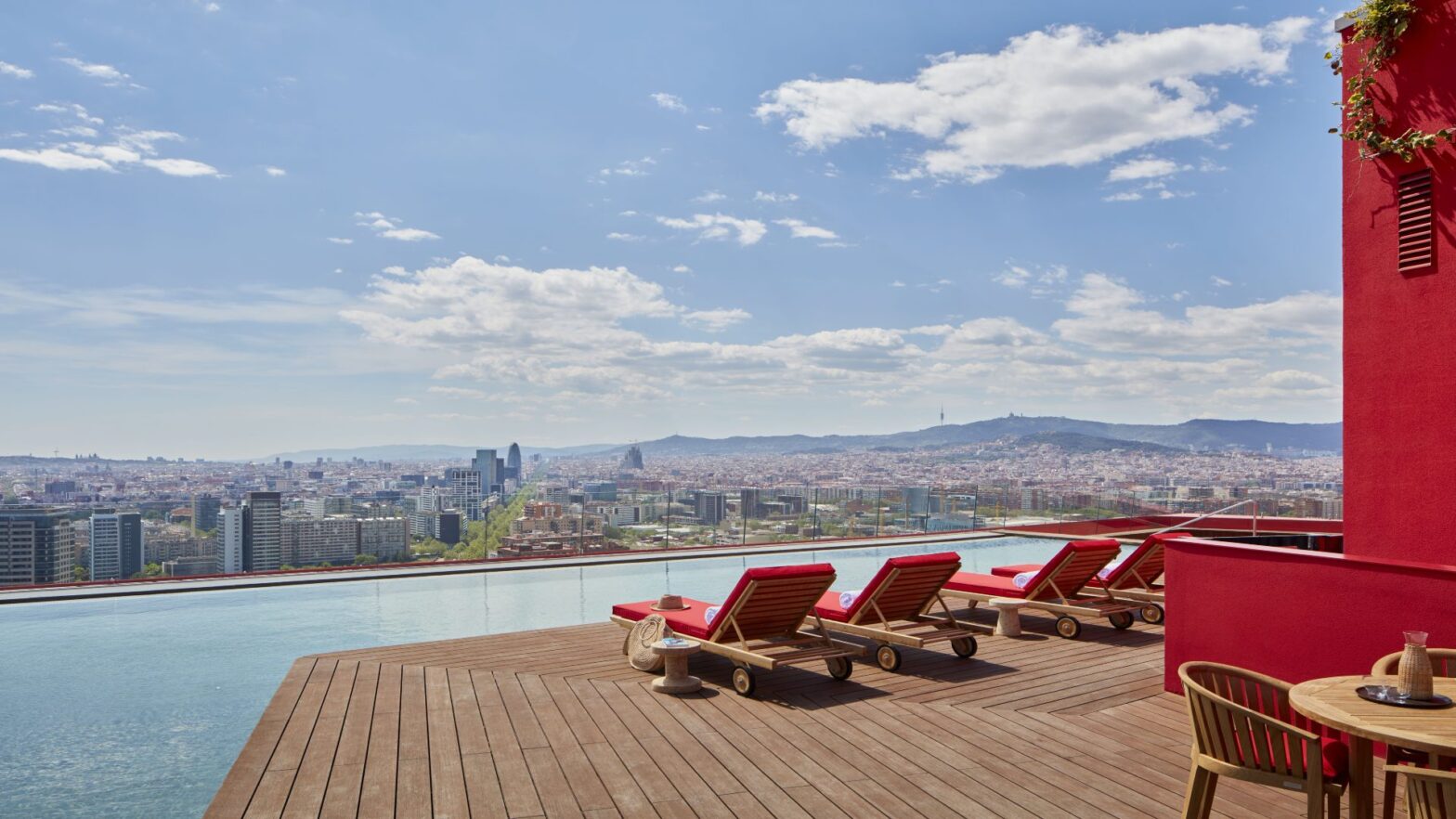If you’re a business owner or charged with planning a corporate retreat, it’s a big responsibility. COVID restrictions and infections have eased around the world, and a lot of companies are looking to get back to doing business in person after a long hiatus and a lot of virtual meetings and events.
A corporate retreat is a good way to do that, but there’s a lot to think about. You want to make sure everyone likes the destination, the accommodations are comfortable, and you go the extra mile to make it worth your employees’ time to attend. You might want to create themed gift bags—for example, maybe you give eco-friendly bags out, or if your retreat is close to the holiday season, you might want to customize luxury Christmas gift bags.
Corporate retreats should be an opportunity to achieve whatever goals you set but also enjoy getting to know one another in a more relaxed environment. You also want to make it a time to show employees you appreciate them, and more companies are opting to make their retreats luxurious as a result.
With that in mind, the following are some things to think about when planning a retreat.
Define Your Goals
If you’re in the very earliest planning stages of a retreat, you need to think about what your goals are. Why are you having this retreat in the first place? What do you want everyone to get out of it, including you?
Maybe you want to improve morale and culture with a retreat focused on teambuilding, and you want the environment to otherwise be somewhat unstructured. You might just want to bring your team together after spending a long time apart.
You could use it as a chance to reflect on your past performance while planning for the future and reinforcing your vision.
Retreats can be a way to foster a sense of psychological safety and comfort among everyone so you can work together better, and they can also be fun and a chance to socialize.
You want to be clear with your goals from the very start because these are what are going to drive the rest of your planning.
If team building is your top priority, you want to think about locations that have activities in the area. If you’re hoping to have more work get done, then you want a venue that will accommodate this. For example, the location needs communal spaces, large tables, and fast Wi-Fi.
Budget will be a major determinant of your location. If money really isn’t an object and your entire objective is giving your employees a great experience, you could choose something abroad, but you need to make sure everyone’s going to be able to reasonably attend.
You can also choose high-end domestic locations that fulfill similar goals.
Even if your budget allows for international travel, you have to remember that your time frame may not. You may only have a few days for the retreat, and traveling overseas just isn’t likely to work with a limited time.
If you have the retreat in the U.S., but you’re having team members from overseas attend, try to fly them in at least a day early so they can get settled.
Choosing Your Venue
Once you have a general idea of the right location for a retreat, consider what venue you’re going to choose. On a corporate retreat, you want to take the actual corporate element out of it. You want the team to feel like they can bond on a less formal basis, even if you’re doing work at the same time.
Avoid places that feel too corporate. Choose resorts or large homes that feel warm and welcoming. If you have a small team, a villa or Airbnb can be a good option. If you have a team between 10 and 50, maybe you choose a luxurious boutique hotel, and for larger teams, you might consider renting an entire hotel or resort.
What About Food and Beverage Programs?
If you opt for a hotel or resort, they’ll often give you a food and beverage minimum for a big group. The bigger your minimum, the cheaper the rates, but your team probably isn’t going to want to eat every meal at the hotel, especially if you’re somewhere with great restaurants.
If you do want to include dining that’s off-site, you’ll want to make these choices early on so you can get group reservations.
Activities—But Keep It Flexible
You may have set aside unstructured time on your agenda, dependent on your larger goals for the event. If you do want to have some activities that are more on the fun side and aren’t necessarily work-related, you might want to choose options that are good for team building. Cooking classes are a good example of a team-building activity that’s good for a retreat.
You might also want to provide options. For example, some of your team might prefer active things, like hiking and yoga, while other team members might want to do things that are more laid-back. You want everyone to feel comfortable.
What Are the Best Retreat Destinations?
If you aren’t sure what destination to go with, some of the most popular throughout the world right now include:
• Austin, Texas: This vibrant city is known for its culinary and music scenes, as well as plenty of outdoor activities. Highlights of Austin include Sixth Street if you’re okay with a team bar crawl or South Congress for its restaurants and boutiques. Barton Springs Pool is a favorite among visitors and residents in Austin. It’s a three-acre spring-fed pool right in the middle of the city.
• Riviera, Maya, Mexico: If you want an international destination, Riviera Maya has sun and sea, and it’s home to Tulum as well as Playa Del Carmen. There are Mayan ruins, and the area is home to the world’s second-largest coral reef. Rivera Maya is located on the Yucatan Peninsula along the Caribbean coast.
• If you want something in Europe, Porto, Portugal is worth looking into. Porto is the second largest city in Portugal, located on the Douro River. Porto is fairly easy to access because most major airlines offer direct flights from the U.S., which isn’t often the case with smaller European cities. In Porto, your team can visit Liberdade Square, which was the former hub of the city, or Mosteria da Serra do Pilar, a former monastery that’s a UNESCO World Heritage Site.
• Athens, Greece: This iconic city of immense history is stunningly beautiful with some of the most well-known attractions in the world, but it’s also a very bustling city with a lot of great restaurants.
• Jackson Hole, Wyoming: Key players in the financial world have a retreat at Jackson Hole, and there’s a good reason. It’s a beautiful part of the country with ski resorts, and it’s within driving distance of Yellowstone National Park and Grand Teton National Park. If you think your team might enjoy tranquility, natural beauty, and outdoor activities, you could consider Jackson Hole. There’s also Jackson Town Square, which is a charming historic downtown. While it might be known for skiing, there’s no bad time of year to visit Jackson Hole.
• New York City, New York: Don’t forget about the Big Apple. No, it’s not going to give you tranquility, but it will give your team some of the best cultural opportunities anywhere in the world. What’s fun in New York City are team scavenger hunts, which can feel adventurous in the big city. Central Park, the Brooklyn Bridge, and Broadway are all a can’t-miss if you choose New York.
• Hawaii: Anywhere you go in Hawaii is going to be an awe-inspiring experience for your team. Hawaii is known for its lush landscapes, stunning beaches, and unspoiled natural beauty. There are also a few big cities like Honolulu here and there on the islands.
• Nashville, Tennessee: Music City has become one of the country’s most visited destinations in the past decade. People come from all over the world for the live music and country lifestyle, but also the restaurants. Music Row is Nashville’s most famous street, home to recording studios and record labels. Broadway is the neighborhood with all the bars, restaurants, and saloons most people associate with Nashville.
• Miami, Florida: Miami has seen an economic boom, and it’s drawing in a lot of new business because of the beaches, great weather, and the lower cost of living compared to cities like New York and San Francisco. There’s good energy in Miami with a lot of innovation and creativity happening, so why not let your team surround themselves with that atmosphere during your retreat?
Planning a high-end company retreat isn’t easy. You have to account for a lot of different and sometimes competing tastes and interests. You also have to balance all this with your larger business goals, but it can be done, and it can be an experience everyone takes value and memories away from.





















